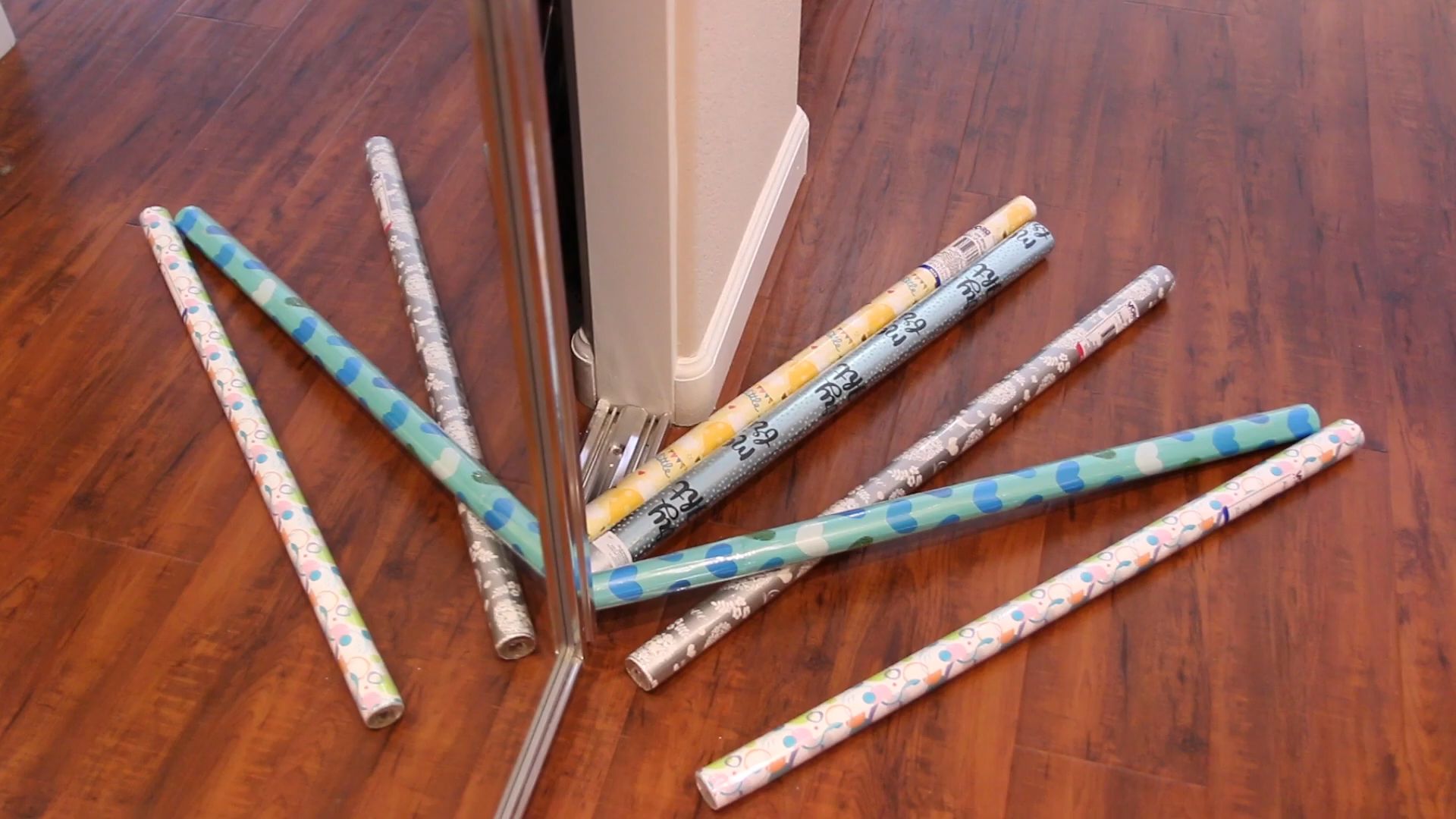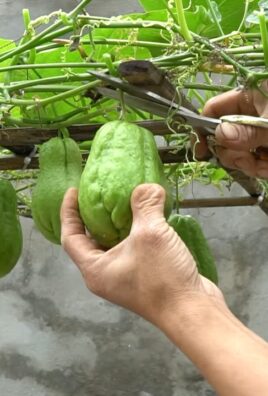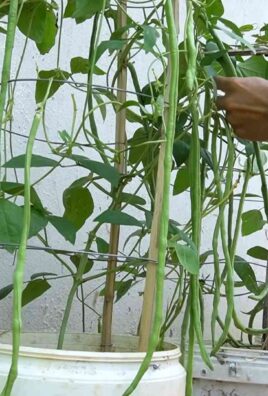Growing Lemongrass at Home might seem like a tropical dream reserved for expert gardeners, but I’m here to tell you it’s surprisingly achievable, even if you’re a complete beginner! Imagine stepping outside your back door to snip fresh, fragrant lemongrass for your Thai curry or a soothing cup of tea. Sounds amazing, right? This isn’t just about adding a pretty plant to your garden; it’s about bringing a vibrant, flavorful ingredient right to your fingertips.
Lemongrass has a rich history, deeply rooted in Asian cultures where it’s been used for centuries, not only in cooking but also in traditional medicine for its believed digestive and anti-inflammatory properties. For generations, families have relied on this versatile herb, and now, you can too!
In today’s busy world, convenience is key, and that’s where this DIY guide comes in. Why spend extra money on store-bought lemongrass when you can easily growing lemongrass at home? This article will provide you with simple, step-by-step instructions and insider tips to cultivate your own thriving lemongrass plant. Not only will you save money, but you’ll also have the satisfaction of knowing exactly where your food comes from and that it’s free from harmful pesticides. Let’s get started and transform your garden (or even your windowsill!) into a lemongrass haven!

Grow Your Own Lemongrass: A Simple DIY Guide
Hey there, fellow plant enthusiasts! Ever wanted to add that fresh, citrusy zing of lemongrass to your cooking without constantly running to the store? Well, you’re in luck! Growing your own lemongrass is surprisingly easy, even if you don’t have a green thumb. I’m going to walk you through a simple DIY method that’s worked wonders for me. Get ready to have a constant supply of this amazing herb right at your fingertips!
What You’ll Need
Before we dive in, let’s gather our supplies. This is a pretty low-key project, so you probably have most of this stuff already.
* Lemongrass Stalks: You can usually find these at your local Asian grocery store or even some well-stocked supermarkets. Look for stalks that are firm, green at the top, and have a bulbous base. Avoid any that look dried out or mushy.
* A Glass or Jar: Something tall enough to hold the lemongrass stalks upright with a few inches of water covering the base.
* Water: Tap water is fine!
* Potting Soil: A good quality potting mix will provide the nutrients your lemongrass needs to thrive.
* A Pot: Choose a pot that’s at least 12 inches in diameter. Lemongrass can get pretty big!
* Optional: Rooting Hormone: While not essential, rooting hormone can help speed up the rooting process.
* Scissors or a Sharp Knife: For trimming the lemongrass.
Section 1: Rooting Your Lemongrass Stalks
This is where the magic happens! We’re going to coax those lemongrass stalks into sprouting roots. It’s easier than you think.
1. Prepare the Stalks: Using your scissors or knife, trim the top of the lemongrass stalks, leaving about 4-5 inches of green growth. This helps the plant focus its energy on root development.
2. Place in Water: Fill your glass or jar with a few inches of water. Place the lemongrass stalks in the water, making sure the bulbous base is submerged. Don’t overcrowd the jar; give each stalk some space.
3. Find a Sunny Spot: Place the jar in a bright, sunny location. A windowsill that gets plenty of sunlight is ideal.
4. Change the Water Regularly: This is important! Change the water every 1-2 days to prevent bacteria growth and keep the water fresh.
5. Wait for Roots: Now comes the patience part. Within a week or two, you should start to see little white roots emerging from the base of the stalks. Let the roots grow to be about 1-2 inches long before moving on to the next step.
Section 2: Planting Your Rooted Lemongrass
Once your lemongrass has developed a good root system, it’s time to give it a permanent home in a pot.
1. Prepare the Pot: Fill your pot with potting soil, leaving about an inch of space at the top.
2. Create a Hole: Dig a hole in the center of the pot that’s large enough to accommodate the roots of your lemongrass stalk.
3. Plant the Lemongrass: Carefully remove the lemongrass stalk from the water and gently place it in the hole. Make sure the roots are spread out and not bunched together.
4. Cover with Soil: Fill the hole with potting soil, gently pressing down around the base of the plant to secure it.
5. Water Thoroughly: Water the newly planted lemongrass thoroughly until the water drains out of the bottom of the pot.
Section 3: Caring for Your Lemongrass
Now that your lemongrass is planted, it’s time to give it the TLC it needs to thrive.
1. Sunlight: Lemongrass loves sunlight! Make sure it gets at least 6 hours of direct sunlight per day. If you live in a particularly hot climate, you might want to provide some afternoon shade to prevent the leaves from scorching.
2. Watering: Keep the soil consistently moist, but not soggy. Water when the top inch of soil feels dry to the touch. During hot weather, you may need to water more frequently.
3. Fertilizing: Feed your lemongrass with a balanced liquid fertilizer every 2-3 weeks during the growing season (spring and summer). This will help it grow strong and healthy.
4. Pruning: As your lemongrass grows, you can trim the leaves as needed for cooking. Just cut the stalks near the base of the plant. This will encourage new growth.
5. Overwintering: If you live in a cold climate, you’ll need to bring your lemongrass indoors during the winter. Place it in a sunny location and water sparingly. You can also cut back the foliage to about 6 inches to help it conserve energy.
Troubleshooting
Even with the best care, you might encounter a few issues along the way. Here are some common problems and how to fix them:
* Yellowing Leaves: This could be a sign of overwatering, underwatering, or nutrient deficiency. Check the soil moisture and adjust your watering accordingly. If the soil is consistently moist, you might be overwatering. If it’s dry, you need to water more often. You can also try fertilizing your lemongrass to provide it with the nutrients it needs.
* Brown Leaf Tips: This is often caused by dry air or inconsistent watering. Make sure you’re watering regularly and consider increasing the humidity around your plant by misting it with water or placing it on a tray filled with pebbles and water.
* Slow Growth: This could be due to insufficient sunlight, poor soil, or lack of fertilizer. Make sure your lemongrass is getting enough sunlight and that you’re using a good quality potting mix. Fertilize regularly during the growing season.
Harvesting Your Lemongrass
The best part! You can start harvesting your lemongrass once the stalks are about 1/2 inch thick.
1. Choose Your Stalks: Select the stalks you want to harvest.
2. Cut the Stalks: Using a sharp knife, cut the stalks near the base of the plant.
3. Prepare for Use: Remove the tough outer layers of the stalk and use the tender inner core in your cooking. You can also freeze lemongrass stalks for later use.
Extra Tips for Success
* Use Rooting Hormone: If you’re having trouble getting your lemongrass to root, try using a rooting hormone. Simply dip the base of the stalks in the hormone powder before placing them in water.
* Choose the Right Pot: Make sure your pot has good drainage holes to prevent waterlogging.
* Protect from Frost: Lemongrass is sensitive to frost, so be sure to protect it during cold weather.
* Divide Your Plant: As your lemongrass grows, it will form clumps. You can divide these clumps to create new plants. Simply dig up the plant and gently separate the clumps, making sure each clump has its own roots.
Why Grow Your Own Lemongrass?
Besides the obvious benefit of having fresh lemongrass on hand whenever you need it, there are several other reasons to grow your own:
* It’s Economical: Buying lemongrass at the store can be expensive, especially if you use it frequently. Growing your own is a much more cost-effective option.
* It’s Sustainable: Growing your own lemongrass reduces your reliance on commercially grown produce, which often travels long distances and contributes to carbon emissions.
* It’s Rewarding: There’s something incredibly satisfying about growing your own food. It’s a great way to connect with nature and learn about the growing process.
* It’s Versatile: Lemongrass can be used in a wide variety of dishes, from soups and curries to teas and cocktails. It’s a versatile herb that can add a unique flavor to your cooking.
So, there you have it! A complete guide to growing your own lemongrass. I hope you found this helpful and that you’re inspired to give it a try. Happy gardening!

Conclusion
So, there you have it! Growing lemongrass at home is not only achievable, but it’s also incredibly rewarding. Imagine stepping out into your garden or onto your balcony and snipping off fresh, fragrant stalks whenever you need them. No more trips to the grocery store for wilted, overpriced lemongrass! This DIY trick transforms your kitchen into a culinary powerhouse, ready to infuse your dishes with that vibrant, citrusy zest that only fresh lemongrass can provide.
But why is this a must-try? Beyond the convenience and cost savings, growing your own lemongrass offers a superior flavor profile. Commercially grown lemongrass often sits on shelves for extended periods, losing its potency. Homegrown lemongrass, on the other hand, is bursting with essential oils and delivers an unparalleled aromatic punch. Think of the difference between a store-bought tomato and one plucked straight from your garden – the same principle applies here.
Furthermore, cultivating lemongrass is a sustainable practice. You’re reducing your carbon footprint by eliminating the need for transportation and packaging associated with store-bought options. Plus, you’re in control of the growing process, ensuring that your lemongrass is free from harmful pesticides and chemicals. It’s a win-win for your taste buds and the environment.
Now, let’s talk about variations. While the water propagation method we discussed is a fantastic starting point, you can also experiment with planting lemongrass directly in soil. This method requires a bit more patience, but it can lead to stronger, more robust plants. Another variation involves using different types of containers. While a simple glass jar works well for propagation, consider transplanting your lemongrass into a larger pot or even a raised garden bed once it has established roots. This will give it ample space to grow and thrive.
For those living in colder climates, consider growing lemongrass in containers that can be easily moved indoors during the winter months. Lemongrass is a tropical plant and cannot tolerate frost. By bringing it inside, you can ensure that it survives the winter and continues to provide you with fresh lemongrass year-round. You can also try different varieties of lemongrass. While the common variety is great for cooking, there are other varieties that are more ornamental and can add a touch of exotic beauty to your garden.
Don’t be afraid to experiment with different growing conditions to see what works best for you. Some people find that lemongrass thrives in full sun, while others prefer partial shade. The key is to observe your plants closely and adjust your care accordingly.
We wholeheartedly encourage you to give this DIY trick a try. It’s a simple, affordable, and incredibly satisfying way to enhance your culinary creations and connect with nature. Once you’ve harvested your first batch of homegrown lemongrass, we’d love to hear about your experience! Share your photos, tips, and recipes in the comments below. Let’s build a community of lemongrass enthusiasts and inspire others to embrace the joys of homegrown herbs. Remember, the secret to amazing Southeast Asian cuisine often lies in the freshness of its ingredients, and with this method, you’ll always have access to the best lemongrass possible. Happy growing!
Frequently Asked Questions (FAQ)
What kind of lemongrass should I buy to propagate?
Look for fresh lemongrass stalks at your local grocery store or Asian market. Choose stalks that are firm, green, and have a bulbous base. Avoid stalks that are wilted, brown, or have signs of mold. The fresher the stalks, the higher the chance of successful propagation. Ideally, choose organic lemongrass to avoid any potential pesticide residue.
How long does it take for lemongrass to root in water?
Generally, you should start seeing roots emerge within 1-3 weeks. The time it takes for roots to develop depends on factors such as the temperature, humidity, and the quality of the lemongrass stalks. Change the water every 2-3 days to keep it fresh and prevent the growth of bacteria. Be patient, and don’t give up if you don’t see roots right away.
What type of soil is best for growing lemongrass?
Lemongrass prefers well-draining soil that is rich in organic matter. A mixture of potting soil, compost, and perlite is ideal. The soil should be slightly acidic to neutral, with a pH between 6.0 and 7.0. Avoid heavy clay soils, as they can become waterlogged and lead to root rot.
How much sunlight does lemongrass need?
Lemongrass thrives in full sun, which means it needs at least 6-8 hours of direct sunlight per day. If you’re growing lemongrass indoors, place it near a sunny window or use a grow light to supplement the natural light. Insufficient sunlight can result in weak, leggy growth.
How often should I water lemongrass?
Water lemongrass regularly, especially during hot and dry weather. The soil should be kept consistently moist, but not waterlogged. Check the soil moisture by sticking your finger into the soil. If the top inch feels dry, it’s time to water. Reduce watering during the winter months when the plant is dormant.
How do I harvest lemongrass?
To harvest lemongrass, simply cut off the stalks near the base of the plant. Use a sharp knife or pruning shears to make a clean cut. You can harvest individual stalks as needed, or you can harvest the entire plant at once. The lower, thicker part of the stalk is the most flavorful.
Can I grow lemongrass in a container?
Yes, lemongrass grows well in containers. Choose a pot that is at least 12 inches in diameter to give the plant enough room to grow. Make sure the pot has drainage holes to prevent waterlogging. Container-grown lemongrass may need to be watered more frequently than lemongrass grown in the ground.
How do I overwinter lemongrass in cold climates?
Lemongrass is not frost-tolerant and will die if exposed to freezing temperatures. If you live in a cold climate, you can overwinter lemongrass by bringing it indoors before the first frost. Place the plant in a sunny location and water it sparingly. You can also cut back the foliage to encourage new growth in the spring.
What are some common problems with growing lemongrass?
Some common problems with growing lemongrass include root rot, aphids, and spider mites. Root rot can be prevented by ensuring that the soil is well-draining and not overwatering. Aphids and spider mites can be controlled with insecticidal soap or neem oil.
Is lemongrass safe for pets?
Lemongrass is generally considered safe for pets, but it’s best to keep them from eating large quantities of it. Some pets may experience mild digestive upset if they consume too much lemongrass. If you have any concerns, consult with your veterinarian.
Can I use dried lemongrass instead of fresh?
While dried lemongrass can be used as a substitute for fresh lemongrass, it doesn’t have the same vibrant flavor and aroma. Fresh lemongrass is always the preferred choice, especially in dishes where the lemongrass flavor is prominent. If you must use dried lemongrass, use about half the amount called for in the recipe.
How can I store fresh lemongrass?
Fresh lemongrass can be stored in the refrigerator for up to two weeks. Wrap the stalks in a damp paper towel and place them in a plastic bag. You can also freeze lemongrass for longer storage. Chop the lemongrass into small pieces and freeze it in an airtight container or freezer bag.




Leave a Comment